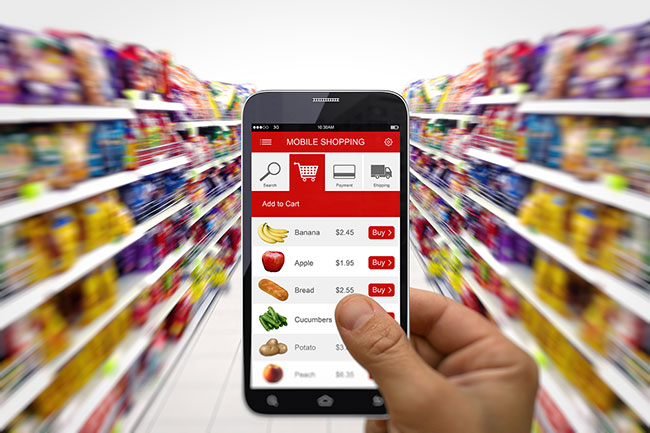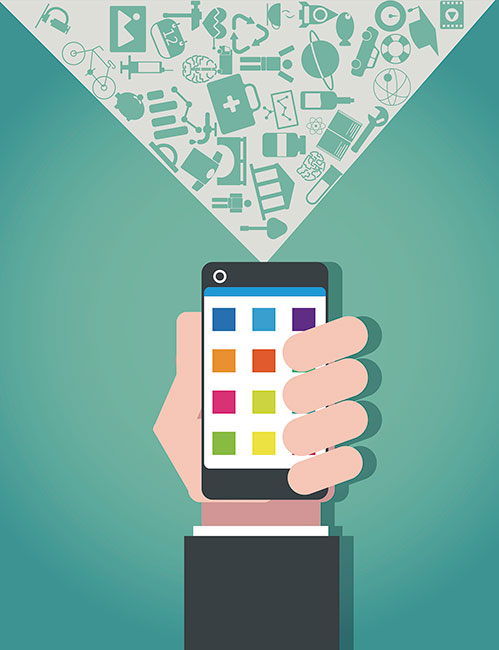••• grocery research
Are shoppers using grocery-store apps?
 Boca Raton, Fla., marketing firm 3Cinteractive conducted an online survey with more than 500 grocer marketers and customers to find out if there is a disconnect between the directions grocers are headed and the experience consumers are looking for in the mobile experience. While apps have become a primary mobile strategy for many grocers, over half of customers polled (56 percent) said they only use one or two grocer apps on a regular basis, despite the majority saying they downloaded as many as four apps to their smartphone.
Boca Raton, Fla., marketing firm 3Cinteractive conducted an online survey with more than 500 grocer marketers and customers to find out if there is a disconnect between the directions grocers are headed and the experience consumers are looking for in the mobile experience. While apps have become a primary mobile strategy for many grocers, over half of customers polled (56 percent) said they only use one or two grocer apps on a regular basis, despite the majority saying they downloaded as many as four apps to their smartphone.
Seventy-five percent of customers polled say mobile coupons have some influence on where they shop. Further, 78 percent of customers say that mobile-enabled coupon programs would influence more visits, more spend and recommendations to friends. A recent mobile loyalty survey from 3C also showed that loyalty programs are key to the mobile experience. (According to Bain, returning guests spend on average 67 percent more than first-time customers.) However, 70 percent of shoppers said they do not sign up for loyalty programs because of the inconvenience of the sign-up process. In the same survey, 72 percent of customers said they would sign up for a loyalty program if the process were simplified by text message. What’s more, text message (48 percent) was cited as the most effective form of notification of loyalty communications compared with e-mail (22 percent) and app notifications (20 percent).
••• shopper insights
Targeted mobile offers can reactivate lapsed customers
A study by Spring, a Chicago marketing platform, indicates that retailers that use targeted online incentives can drive shoppers to a brick-and-mortar store and also reactivate lapsed customers, increase the average transaction amount and turn average spenders into top spenders. The study targeted shoppers with mobile offers from large retail brands that consumers connected to their existing debit or credit card and could only be redeemed at brick-and-mortar locations. Sixty-five percent of those who redeemed the offer had not previously spent in the mall; this segment (No Spend Prior to Offer) also had the highest average transaction size – $130.25. The next-highest segment came from the Top 25 Percent of Spenders segment at $78.12. The average transaction size across all segments increased from $63.02 to $98.91, with the Average Spenders segment increasing 114 percent ($22.33 to $47.76). The average program spend per day rose from $6.07 to $21.03 (a 246 percent in-crease). The average number of transactions per day increased from 0.10 to 0.21 (a 120 percent increase).
study by Spring, a Chicago marketing platform, indicates that retailers that use targeted online incentives can drive shoppers to a brick-and-mortar store and also reactivate lapsed customers, increase the average transaction amount and turn average spenders into top spenders. The study targeted shoppers with mobile offers from large retail brands that consumers connected to their existing debit or credit card and could only be redeemed at brick-and-mortar locations. Sixty-five percent of those who redeemed the offer had not previously spent in the mall; this segment (No Spend Prior to Offer) also had the highest average transaction size – $130.25. The next-highest segment came from the Top 25 Percent of Spenders segment at $78.12. The average transaction size across all segments increased from $63.02 to $98.91, with the Average Spenders segment increasing 114 percent ($22.33 to $47.76). The average program spend per day rose from $6.07 to $21.03 (a 246 percent in-crease). The average number of transactions per day increased from 0.10 to 0.21 (a 120 percent increase).
